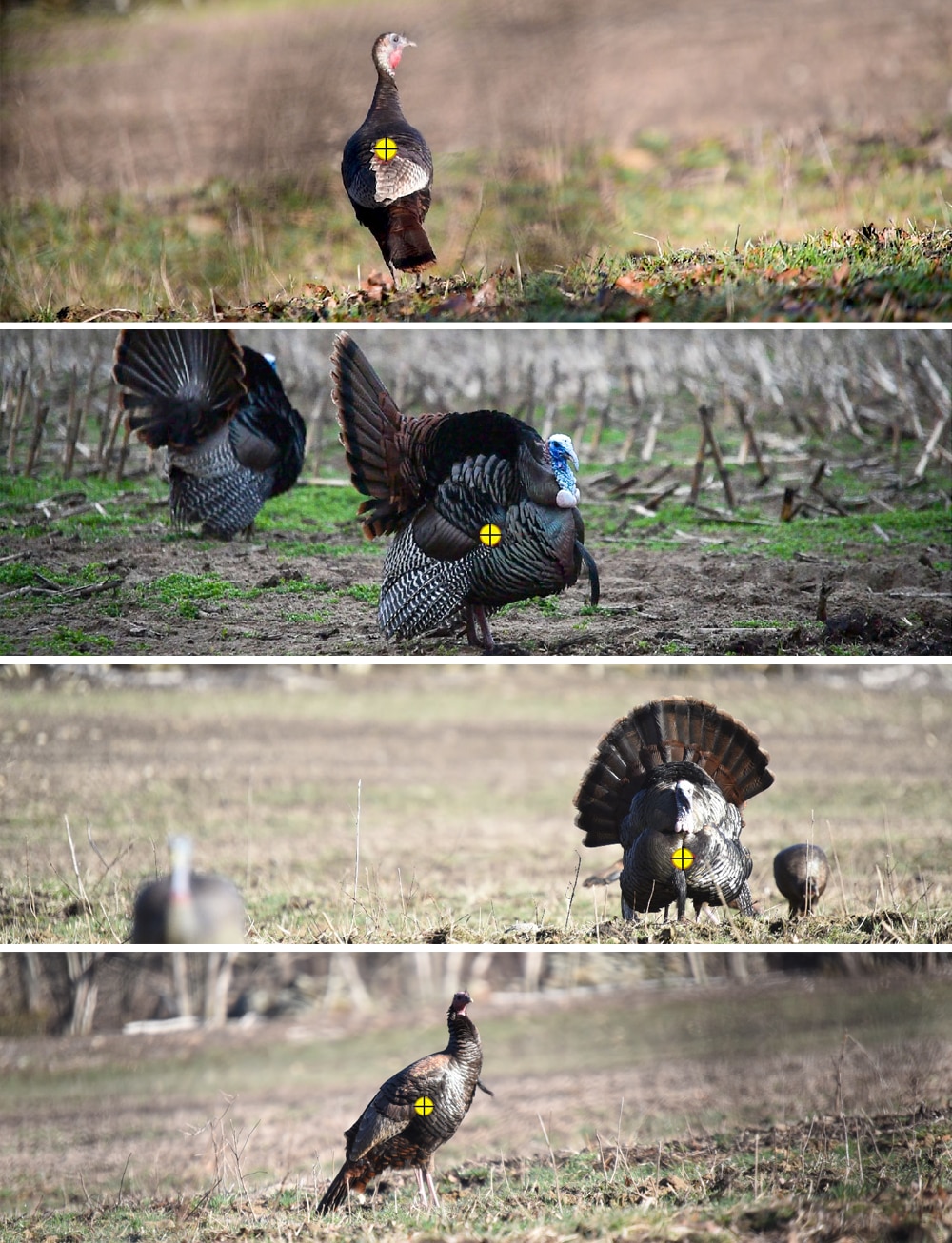It’s no secret that bowhunting adds to the challenge of virtually any game one could pursue. Archers have shorter effective ranges, use increased amounts of movement, and use broadheads which require direct contact with vital organs to humanely take down game. If you are looking to test your skills with a bow during turkey season, get started with these tips.
Tip 1: Conceal your movements—hunt from a blind
Perhaps the hardest part of bowhunting for turkeys is the amount of movement that is involved with drawing a bow. Turkeys have excellent vision with a nearly 300-degree field of vision and are always watchful for one of their many predators. Even the slightest movement can scatter a group of birds. The best way to avoid a turkey’s keen vision is to hunt from the confines of a blind. This can be a store-bought pop-up or a handmade blind using brush. Most experienced turkey hunters agree that the best blind is dark on the inside to completely conceal movements. Make sure you wear gloves and a facemask to conceal your skin and wear black or dark camo when inside the blind.
Note: If hunting turkeys from a treestand during the archery deer season, make sure to pick the right time to draw your bow. Unlike deer, drawing your bow slowly doesn’t work on turkeys. Wait until the turkey’s head is behind a tree or bush to draw.
Tip 2: Set your shot up for success
Practice often: Precision and accuracy are key to hunting turkeys with a bow. Turkeys have very small kill zones regardless of whether you aim for the head or the vital organs in their body. If you will be hunting from a treestand, practice shooting from a stand or from other positions you may encounter in the field. Unlike many big game animals, turkeys can be facing nearly any direction and still offer the hunter an ethical shot.
Get them close: Again, the small size of the vital areas allows little room for error. Practice shooting from different distances and know your comfortable range. Ultimately, accuracy increases at closer range, so careful positioning and the use of calls are essential tactics to close the distance during a hunt.
Identify your range in the field: Use a rangefinder in the field to precisely determine when a turkey is within your range.
Never shoot a walking turkey: Unfortunately, turkeys rarely stay still for more than a few seconds when they are feeding and traveling. The longer you can hold you bow back the better. You can draw when the turkey’s head is behind a tree or brush and then hold until the turkey presents a still and clear shot. Be ready by practicing at home and finding a comfortable draw weight.
Ethical hunters avoid wounding an animal at all costs—if you are not completely confident in your shot, don’t take it.
Tip 3: Choose the right broadhead
When bowhunting for turkeys in Massachusetts, arrows must have a well sharpened steel broadhead blades not less than 7/8 inches in width. You can choose from a nearly endless selection of broadhead brands and cutting diameters. While this topic can prompt much debate among seasoned hunters, broadheads fly differently off different bows. Ultimately, it’s important to choose a style of broadhead, practice with them, and become confident before using them in the woods. Read more about 2 categories of broadheads suitable for hunting turkeys:
Fixed blade and mechanical broadheads: Fixed blade and mechanical broadheads can be used ethically for turkeys when aiming for the head or the vital organs within the body. The key to success with these broadheads is to practice with them until you are very accurate before going out hunting. While mechanical broadheads generally fly identically to practice/field points, fixed blade broadheads can perform differently than practice/field points.
Guillotine style broadheads: These broadheads are designed specifically for aiming and shooting at a turkey’s neck or head. They come in a range of cutting diameters up 4.5 inches wide. These broadheads make a clean and fast kill when they connect with a turkey’s neck or head. If the neck and head are missed, a hunter is likely to miss completely without wounding the bird. Guillotine broadheads are often only accurate up to 20 yards and are often unusable after one shot.
